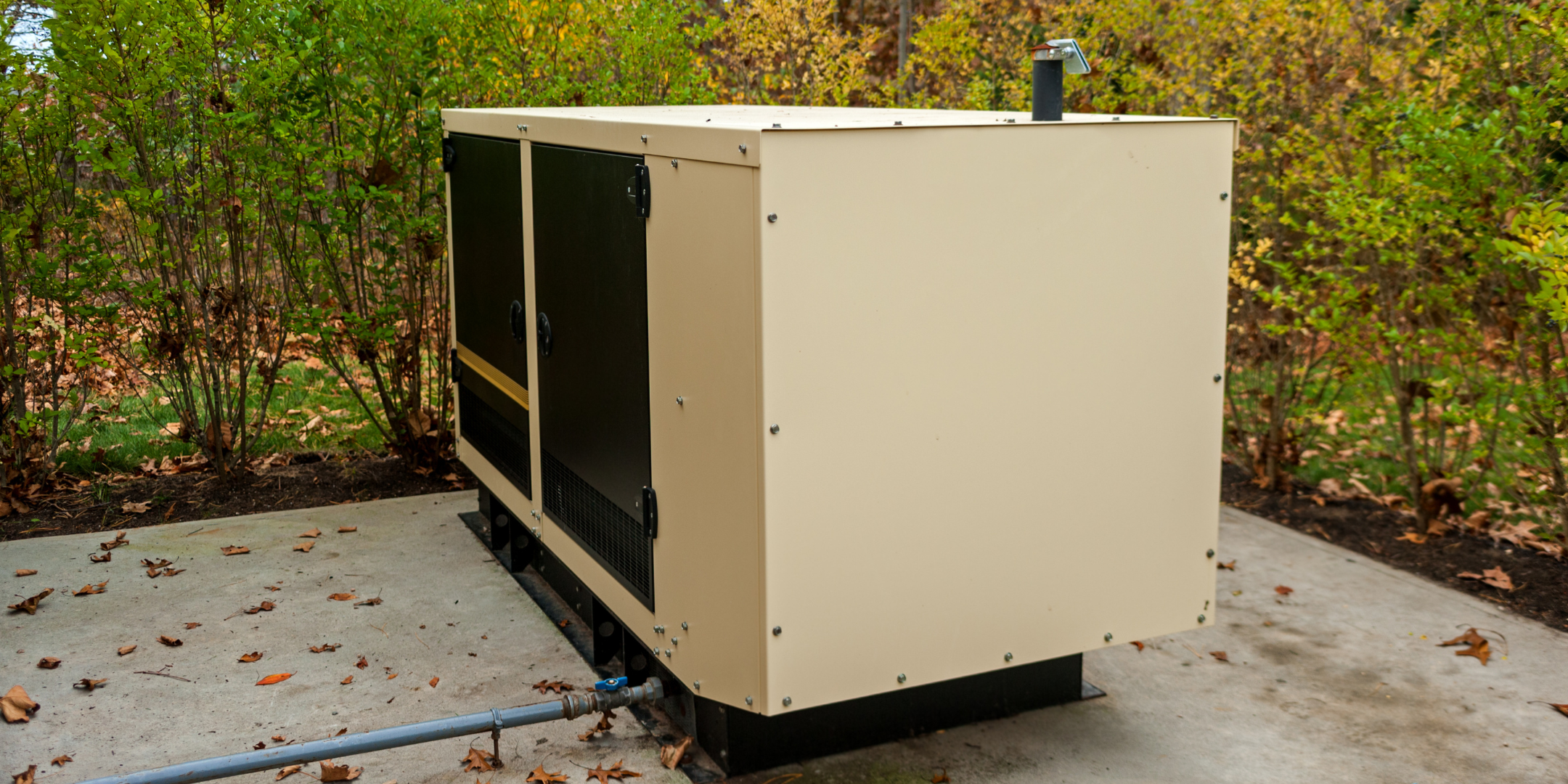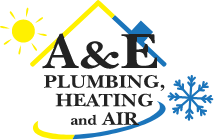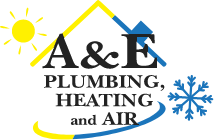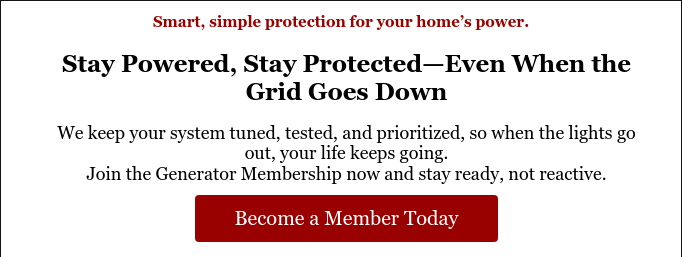
When the power goes out during a heatwave, it’s only natural to head for your generator and try to get the AC running.
AC running.
However, many folks don't realize that a lot of the generators available on the market now—especially portable ones—can’t actually handle the real power demand of a central air conditioner or heat pump. And forcing it can lead to tripped circuits, burned-out equipment, or a cooling system that barely works when you need it most.
With over 17 years of experience helping homeowners design safe, efficient HVAC systems, we’ve seen this mistake more times than we can count—and the repair bills that follow. By the end of this article, you’ll know how to size a generator the right way, avoid overloading your system, and make sure your home stays cool and protected during the next outage.
What is Generator Load Management—and Why Should You Care?
If you want to power your AC without upsizing your generator to something massive, load management might be your best friend.
It’s a system that automatically prioritizes which appliances run during an outage. So instead of your generator trying to run everything at once (and tripping out), it staggers loads based on priority.
For example:
- Your generator might power your fridge and lights first,
- Waits until there’s available power, then allows the AC to start,
- Or automatically suspends non-essentials when the AC kicks on.
This allows you to use a smaller, more affordable generator without giving up core comforts. It’s a smarter, safer way to stretch your backup power without overspending.
Why Your AC Needs More Power Than You Think (Even If the Label Says Otherwise)
If you’re looking at your central air conditioner’s specs and seeing something like “3,500 watts,” it’s easy to assume, “Okay, I just need a generator that can handle 3,500 watts.” But what most people don’t realize is that your AC needs a big surge of power just to turn on—and that surge is often 2 to 3 times higher than what it uses while it’s running.
assume, “Okay, I just need a generator that can handle 3,500 watts.” But what most people don’t realize is that your AC needs a big surge of power just to turn on—and that surge is often 2 to 3 times higher than what it uses while it’s running.
This surge is called start-up wattage or inrush current.
Here’s a simple comparison:
- Think of your AC like a car. It takes more energy to start the engine than to keep it running.
- A central AC unit that normally runs at 3,500 watts might spike to 7,000 or even 9,000 watts for a few seconds when it kicks on.
- Once it’s running, the power demand drops back down—but your generator still has to be strong enough to handle that initial surge.
So why does this matter?
- Most generators are advertised by their running watts, not their ability to handle short-term spikes.
- If your generator isn’t large enough to handle the start-up load, it may:
- Stall out (just shut off completely),
- Trip the breaker, cutting power to everything,
- Or worse—damage your AC’s compressor, which is one of the most expensive parts to replace.
- If your generator isn’t large enough to handle the start-up load, it may:
And here’s the tricky part: you might not notice any damage right away. Your AC might seem like it’s running fine… until one day it isn’t. We've seen homeowners burn through perfectly good systems simply because their generator was "almost" big enough—but not quite.
Sizing your generator based on the AC’s regular wattage isn’t enough. You need to factor in that powerful, momentary surge that happens every single time it turns on.
Here's a breakdown of typical AC sizes and what kind of generator power you really need:
| AC Size (Tonnage) | Running Wattage (Avg.) | Start-Up Wattage Range | Minimum Generator Size | Recommended Generator Models |
|---|---|---|---|---|
| 1.5 Ton (18,000 BTU) | 1,500 – 2,000 W | 3,000 – 4,000 W | 5,000+ W | Honda EU7000iS, Generac GP6500 |
| 2 Ton (24,000 BTU) | 2,000 – 2,500 W | 4,000 – 6,000 W | 7,000+ W | Champion 100891 7500-Watt, Generac GP8000E |
| 3 Ton (36,000 BTU) | 3,000 – 4,000 W | 6,000 – 9,000 W | 10,000+ W | DuroMax XP12000EH, Generac XT8500EFI |
| 4 Ton (48,000 BTU) | 4,000 – 5,000 W | 8,000 – 11,000 W | 12,000+ W | Westinghouse WGen12000, Champion 100111 15kW |
| 5 Ton (60,000 BTU) | 5,000 – 6,000 W | 10,000 – 13,000+ W | 15,000+ W | Generac Guardian 22kW Standby, Briggs & Stratton 20kW |
How to Create Your Generator Plan
If your current generator was sized without considering your AC’s start-up load—or if you’re relying on a portable model from a big-box store—there’s a good chance it’s underpowered.
portable model from a big-box store—there’s a good chance it’s underpowered.
Here’s how to avoid that:
- Always size your generator to exceed the highest expected surge, not just the running wattage.
- Consider adding a soft start kit to your AC. This can lower the start-up wattage by up to 50%, making it easier to pair with a smaller generator. Our techs can always provide one during your next service call.
- If you want to power other essential appliances (fridge, freezer, lights, etc.) at the same time, add those wattages on top of your AC needs when choosing your generator.
Why a "Whole-House Generator" Doesn’t Always Mean AC-Friendly
Another common, but still unpleasant, surprise is when a homeowner invests in a whole-house generator and then finds out it still won’t run the AC reliably. That’s usually because the system wasn’t sized with your start-up loads in mind—or no one accounted for simultaneous appliance use.
It’s not uncommon for homeowners to say, “But my generator powers the whole panel!” And that’s technically true—but “powering the panel” doesn’t mean it can handle all the appliances turning on at once.
That’s why load prioritization is so critical.
What About Portable Generators?
Many homeowners rely on a portable generator stored in the garage, especially in rural or wildfire-prone areas where power outages are frequent. While this setup is great for essentials like lights, the fridge, or a sump pump, most portable generators under 8,000 watts are not suited to start a central AC or heat pump.
Even if the wattage looks close on paper, the voltage stability of many portables just isn’t designed for the sensitive electronics inside modern HVAC systems. Attempting to run your AC with one could void your warranty—or cause damage that won’t be obvious until cooling season is in full swing.
Load Prioritization: Your AC Might Not Be the Only High-Draw Appliance to Consider
Air conditioners aren’t the only appliances that have high start-up loads. If you’re also powering:
- A well pump (common in rural homes),
- An electric water heater or tankless system,
- A heat pump or dual-fuel heating system,
- Or even a second fridge or deep freezer.
Each one of those may require similar surge protection from your generator. Add them up, and it becomes clear why so many backup systems fall short during real emergencies—not because they were poorly made, but because they were poorly planned.
How to Determine Load Consideration
Choosing a generator is about more than just the wattage label. It’s about knowing how you actually use your home—and how you want it to function during an outage.
For example:
- If you’re someone who works from home, powering your internet, router, and a few lights may be non-negotiable.
- If you have a child, elder, or health condition that makes heat a medical concern, AC becomes essential, not optional.
- If your property depends on a well pump or sump pump, water access or flood prevention may outweigh your cooling priorities.
The good news is you can design a backup power system that meets your real needs with A&E Plumbing, Heating and Air. But it starts with knowing what your equipment actually demands, what your generator can realistically supply, and how to balance that intelligently during an outage.
Why “Close Enough” Isn’t Good Enough When It Comes to Generators
You started this article wondering whether your generator could really handle your AC—and maybe feeling unsure about what those wattage numbers actually meant. Along the way, you’ve learned that “close enough” isn’t always good enough, and that even a small mismatch between your generator and your AC’s start-up load can lead to frustrating issues like breaker trips, overheating, or long-term equipment damage.
unsure about what those wattage numbers actually meant. Along the way, you’ve learned that “close enough” isn’t always good enough, and that even a small mismatch between your generator and your AC’s start-up load can lead to frustrating issues like breaker trips, overheating, or long-term equipment damage.
With over 17 years of experience helping homeowners navigate these decisions, we’ve seen firsthand how smart planning can mean the difference between a seamless backup system—and one that lets you down when it matters most.
If you were feeling unsure at the beginning, now you’re equipped to ask the right questions, weigh your real needs, and move forward with a plan that actually works when the power doesn’t.
Let us help you plan your system safely—so when the next outage hits, you’re not left sweating. Schedule your service call today to see what kind of whole-home generator would best meet your needs.
Daphne Hunt holds a bachelor's degree in English and Mass Communication and has a lifelong passion for writing. She thrives on using her skills to craft compelling pieces that inform, inspire, and connect with readers.
Topics:



